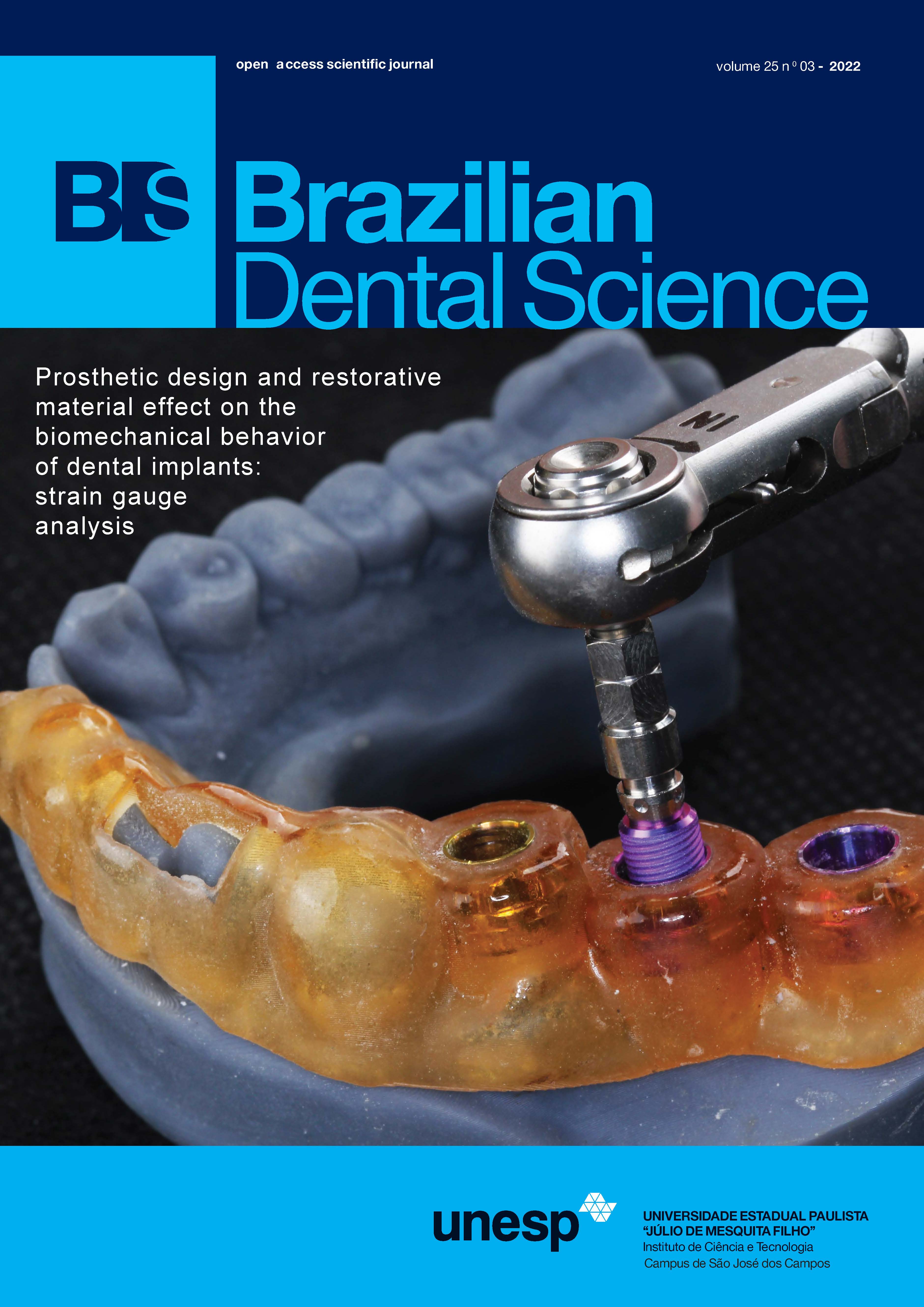Mandible bone density in adolescents with cerebral palsy using antiepileptic drugs
DOI:
https://doi.org/10.4322/bds.2022.e3279Abstract
Objective: The aim of this study was to assess the bone density of the mandible in adolescents with cerebral palsy
(CP) treated with antiepileptic drugs using one beam computed tomography (CBCT). Methods: The study was
carried out with 18 adolescents aged 12–18 years, undergoing routine dental treatment at the dental clinic of
APCD-São Caetano do Sul. CBCT scans were of divided into two groups: G1 adolescents with CP using antiepileptic
drugs and G2 normoactive adolescents. A single dentomaxillofacial radiologist assessed and evaluated the images
using Dental Slice software and Image J. Fisher’s exact tests as well as paired and unpaired Student’s t-tests
were performed. Results: Groups differed significantly with regard in the values of density (p < 0.001), with
G1 presenting lower values compare to G2. G1 showed significantly lower density means on the right side, left
side, and right/left sides of the mandible edge than G2 (p < 0.001). Conclusion: CP patients using antiepileptic
drugs show evidence of bone mineral density loss of the mandible.
KEYWORDS
Antiepileptic drugs; Bone mineral density; Cone beam computed tomography; Mandibular indices; Osteoporosis.
Downloads
Downloads
Published
How to Cite
Issue
Section
License
Brazilian Dental Science uses the Creative Commons (CC-BY 4.0) license, thus preserving the integrity of articles in an open access environment. The journal allows the author to retain publishing rights without restrictions.
=================




























